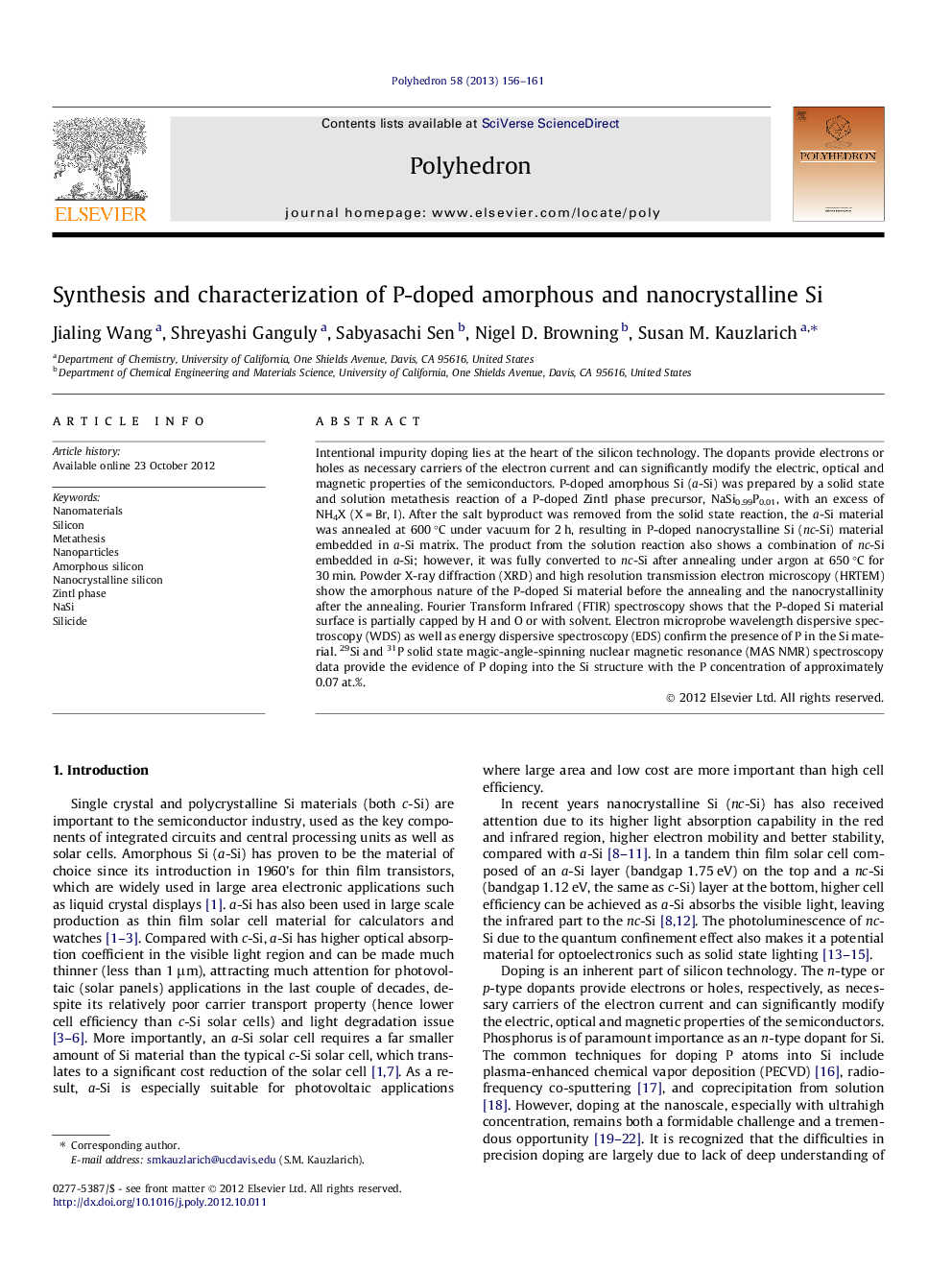| Article ID | Journal | Published Year | Pages | File Type |
|---|---|---|---|---|
| 1334559 | Polyhedron | 2013 | 6 Pages |
Intentional impurity doping lies at the heart of the silicon technology. The dopants provide electrons or holes as necessary carriers of the electron current and can significantly modify the electric, optical and magnetic properties of the semiconductors. P-doped amorphous Si (a-Si) was prepared by a solid state and solution metathesis reaction of a P-doped Zintl phase precursor, NaSi0.99P0.01, with an excess of NH4X (X = Br, I). After the salt byproduct was removed from the solid state reaction, the a-Si material was annealed at 600 °C under vacuum for 2 h, resulting in P-doped nanocrystalline Si (nc-Si) material embedded in a-Si matrix. The product from the solution reaction also shows a combination of nc-Si embedded in a-Si; however, it was fully converted to nc-Si after annealing under argon at 650 °C for 30 min. Powder X-ray diffraction (XRD) and high resolution transmission electron microscopy (HRTEM) show the amorphous nature of the P-doped Si material before the annealing and the nanocrystallinity after the annealing. Fourier Transform Infrared (FTIR) spectroscopy shows that the P-doped Si material surface is partially capped by H and O or with solvent. Electron microprobe wavelength dispersive spectroscopy (WDS) as well as energy dispersive spectroscopy (EDS) confirm the presence of P in the Si material. 29Si and 31P solid state magic-angle-spinning nuclear magnetic resonance (MAS NMR) spectroscopy data provide the evidence of P doping into the Si structure with the P concentration of approximately 0.07 at.%.
Graphical abstractIntentional impurity doping lies at the heart of the silicon (Si) technology. The dopants provide electrons or holes as necessary carriers of the electron current and can significantly modify the electric, optical and magnetic properties of the semiconductors. P-doped amorphous Si (a-Si) and nanocrystalline Si (nc-Si) were prepared by solid state and solution processing. 29Si and 31P solid state magic-angle-spinning nuclear magnetic resonance (MAS NMR) spectroscopy data provide the evidence of P doping into nanocrystalline Si with the P concentration of approximately 0.07 at.%.Figure optionsDownload full-size imageDownload as PowerPoint slide
